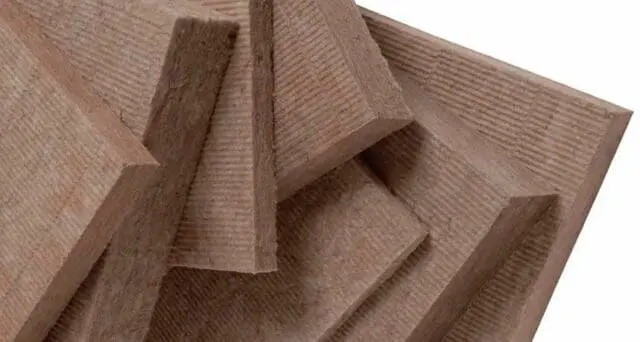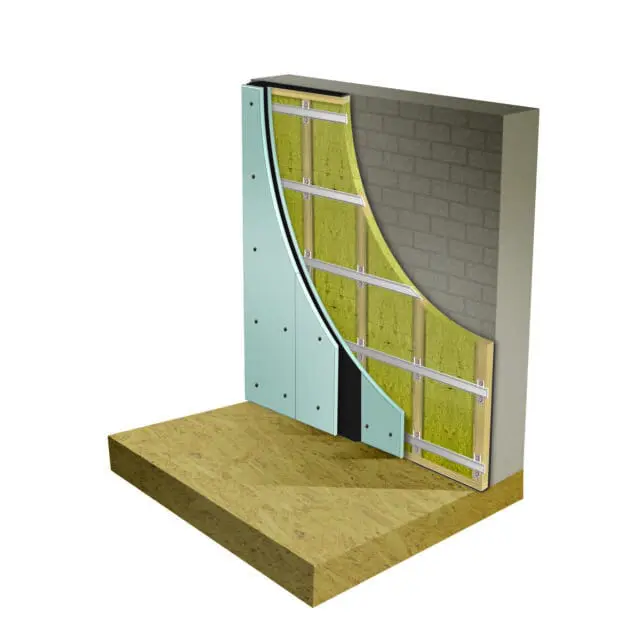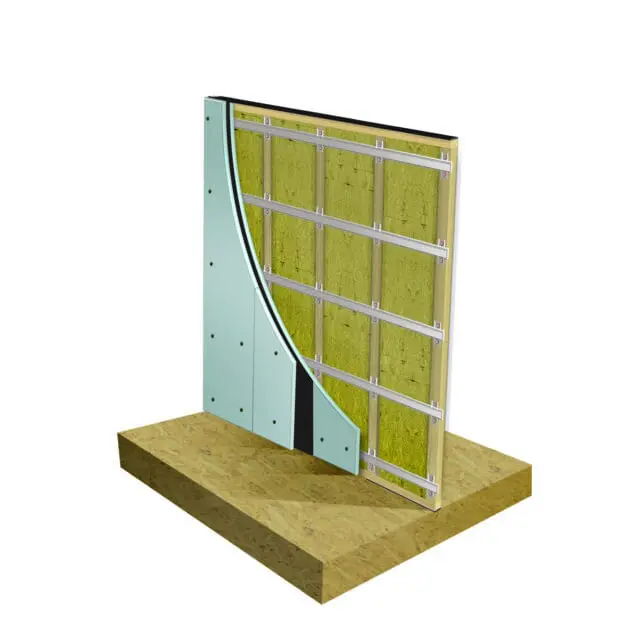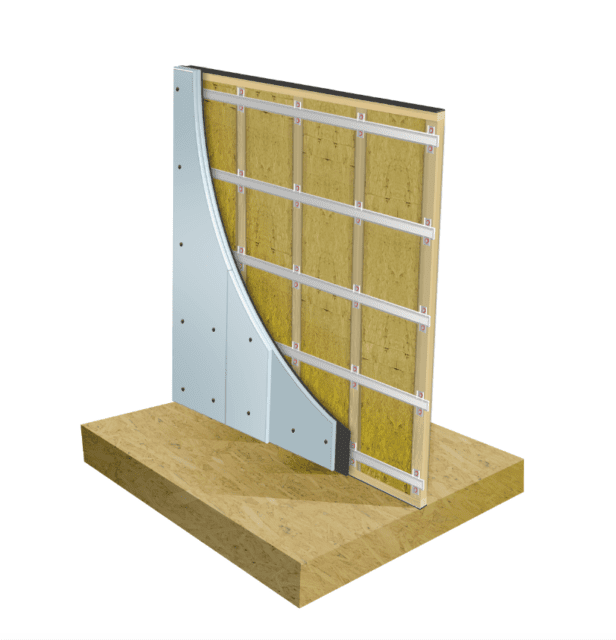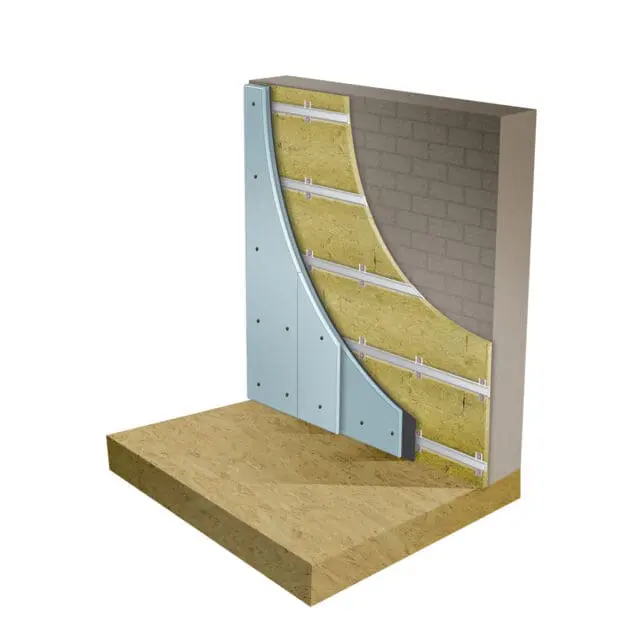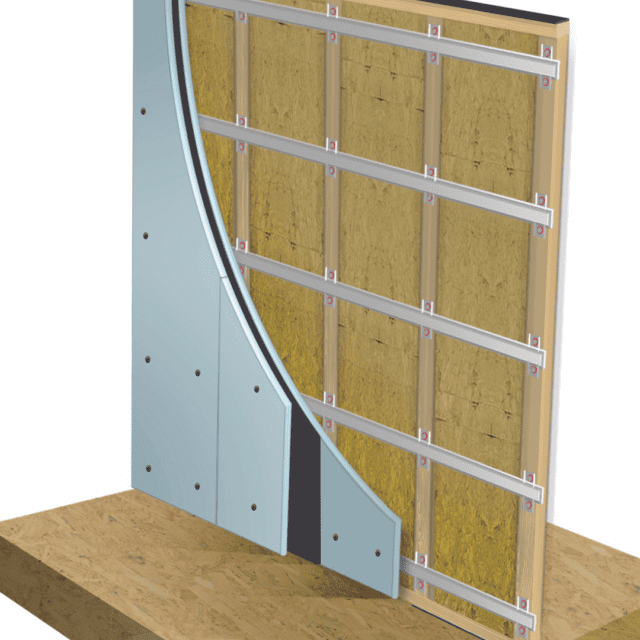Guide To Soundproofing Walls

Ultimate guide to soundproofing walls
How to soundproof a wall?
Fortunately, you are in the right place if you’re looking for the answer to how to soundproof a wall? This guide will explain what is required to successfully soundproof different wall types and stop unwanted noise from transferring between rooms. Whether you are soundproofing against noisy neighbours or soundproofing internal walls, we will show you the best wall soundproofing products and techniques to achieve the best noise reduction levels.
Why do you need to soundproof a wall?
There are several reasons why you should soundproof your walls. At Noisestop, we receive many enquiries about soundproofing walls. The most common question we receive is how to soundproof my wall against a noisy neighbour. Don’t worry; we will definitely cover that in the guide! For more information, read our guide on soundproofing party walls.
Another reason you might soundproof a wall is to enhance the privacy in your home or at work. Soundproofing internal stud walls is an excellent way of reducing noise transfer in your home. Sound insulating walls in the workplace is also very common to ensure privacy. For more information, read our guide on soundproofing stud walls.
What are the main questions for soundproofing a wall?
- What type of wall is it? The choice of construction material, whether solid brick/block or lightweight timber stud, impacts the wall’s sound-blocking ability and dictates the necessary level of soundproofing.
- How much noise can you hear through the wall? Evaluate the noise level and determine whether it is low-level background noise, medium noise levels (TV noise and conversation), or high noise levels (raised voices and dogs barking).
- What type of noise can you hear? In most cases, airborne noise transfer through walls (conversation and TV noise) is the main problem. However, vibrations from low-frequency noises such as deep voices, snoring, and movement would also require soundproofing.
What is the best method of soundproofing a wall?
Adding mass, isolation, and sound absorption are the best ways to soundproof walls.
- Adding mass and density: The best way to increase the wall’s mass is to use acoustic insulation and soundproof panels. This will block sounds as they try to pass through the wall.
- Isolating the wall: Decoupling/isolating the wall will make it harder for sound to transfer from one side to the other. The best way to isolate the wall is with a sound isolation clip system.
- Sound absorption: Sound absorption or dampening is the wall’s ability to absorb sound as it comes into contact. Acoustic insulation and mass-loaded vinyl membranes are good choices for absorbing sounds.
- Product combinations: The best soundproofing method is to insulate walls using various materials. A soundproof system combining all these elements will ensure high sound reduction levels.
Can a wall be soundproofed against noisy neighbours?
We mentioned earlier that we would get to noisy neighbour soundproofing, and here we are. The answer is yes, you can soundproof a wall against a noisy neighbour. By following the key principles of soundproofing, adding mass, creating separation, and improving the wall’s ability to absorb sound, you will soundproof against unwanted neighbour noise.
What is the difference between party wall and stud wall soundproofing?
Soundproofing, for either wall type, uses the same products and techniques. Following the same principles of sound insulation will soundproof a stud wall in the same way it will soundproof a party wall. The main difference is that most internal walls are constructed from lightweight studs and plasterboard, with very little sound insulation. Adding dense materials, sound absorption, and isolating the walls will improve the sound insulation and block unwanted sound transfer.
What is the best acoustic insulation for walls?
Sound insulate a stud wall or an acoustic party wall solution with high-density sound insulation slabs. DFM acoustic insulation inside a stud frame increases the wall’s ability to block and absorb the noise.
Acoustic insulation slabs add mass and sound absorption to walls
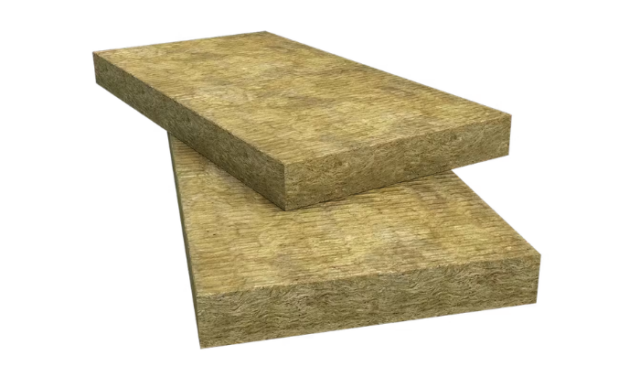
- Sound insulate stud walls against airborne sound transfer using sound insulation slabs.
- Acoustic insulation adds mass and sound absorption to the wall.
- The best acoustic density of insulation to use is 60kg/m3.
- The thickness you use will suit the depth of the frame you are soundproofing, but you are not required to fill the stud cavity.
- Acoustic insulation won’t fully soundproof the area but is an essential component in a soundproof system for stud and party walls.
What are the best materials to soundproof a wall?
Here are three solutions we recommend for soundproofing a party wall
Recommended solutions to soundproof stud walls
Stud wall soundproofing solutions that add mass and sound absorption and decouple the wall will offer the best levels of sound insulation.
AcoustiClip stud wall soundproofing system offers the best level of sound insulation

What is the best wall soundproofing solution?
All of these solutions will effectively soundproof your party walls. When choosing the most suitable solution, we would ask the following questions to determine the most appropriate.
How much noise do you hear through the wall?
Establishing the noise level is key when choosing the correct soundproofing solution. If you can only hear low-level background noise through the wall, the Silent Panel would sufficiently soundproof the wall. The AcoustiClip Direct System would be more suitable if the sound is audible conversation and clear TV noise. For rooms that require high levels of noise reduction, such as home cinemas and studios then, we would recommend the AcoustiClip Solid Wall Stud System.
How much space can you afford to lose?
Space loss is a significant factor in deciding on the right solution. The slimmest options are soundproof panels ranging between 20mm and 30mm thick; the Noisestop Silent Panel provides the highest level of sound insulation when applied directly to the wall. Our slimmest solution is the Noisestop Acoustic Panel for walls requiring sound insulation with minimal space loss. Soundproof systems applied directly to the wall will range between 45mm and 80mm. The thickness can be up to 120mm and beyond for the very highest level of soundproofing.
Wall soundproofing recommendations in more detail
Once you have established the noise level and the amount of space the soundproofing can take up, you can choose the best solution for your wall.
Option 1.
The Noisestop Silent Panel (the slimmest option)
A great choice for soundproofing walls without compromising living space, the Noisestop Silent is applied directly to the wall, ensuring space loss is at a minimum. The Silent Panel is only 30mm thick.
The Silent Panel is constructed from four layers of different high-mass soundproofing materials to block a wider frequency range. The various layers add mass to the wall and improve its ability to absorb sound. The three layers to the back of the board are a combination of mass-loaded vinyl and acoustic-grade foam. The final layer is an acoustic soundproof plasterboard, allowing for an easy DIY installation; you are then left with a plasterboarded finish, ready to add a skim coat of plaster and decorate.

Benefits of soundproofing with the Noisestop Silent Panel
- Keeps space loss to a minimum. Applied directly to walls with only 30mm of space loss
- Soundproof directly onto solid party walls or stud walls
- Slim panel and a very straightforward DIY install, meaning minimal disruption to your home
- The Silent Panel consists of 2 layers of mass-loaded vinyl to block airborne noise and closed-cell foam to absorb vibrations. These layers are bonded to a 15mm soundproof plasterboard
- Soundproof plasterboard is higher in mass than regular plasterboard and can be skimmed and decorated as normal
- Passes Part E Building Regulations when applied to certain walls
Option 2.
AcoustiClip Direct Party Wall Soundproofing Kit
Our most popular party wall soundproofing solution is the AcoustiClip Direct System. This is due to its excellent noise reduction and ease of installation, directly onto the wall, making it a space-saving option.
The AcoustiClip Direct System combines all the materials required to achieve highly effective noise reduction. The AcoustiClip sound isolation clip is applied directly to the wall, meaning there is no need for an additional stud frame. The metal furring channel clips into place, and acoustic insulation is fitted between the cavity created by the channel.
Two layers of soundproof boarding are then fixed to the channel to complete the acoustic wall. One layer is a 15mm soundproof plasterboard, and the other is our 18mm Noisestop 1 Plus Panel, which consists of a 12.5mm soundboard and a sheet of 10kg mass-loaded vinyl bonded to the paperboard. The acoustic false wall is then ready to plaster skim, or decorate.
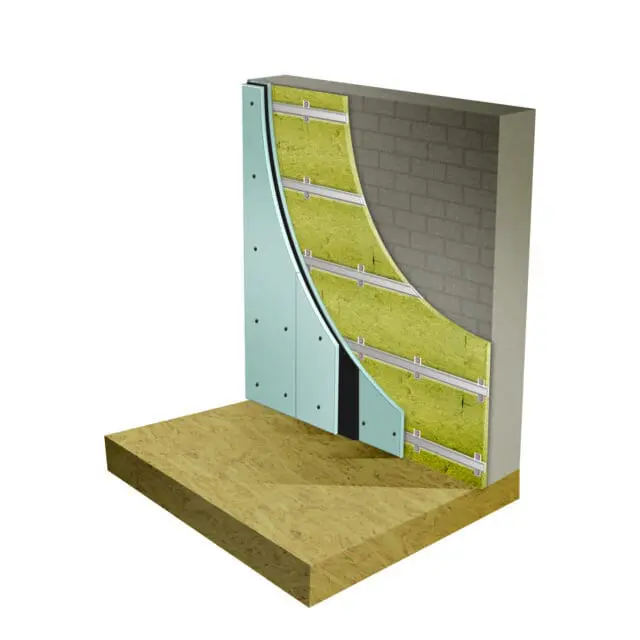
Benefits of soundproofing with the AcoustiClip Direct System
- Minimal space loss due to the direct to wall application under 80mm
- It offers the highest level of soundproofing of any direct-to-wall soundproofing solution
- Our recommended wall soundproofing solution for soundproofing against medium to loud levels of noise, (such as clear conversation, TV noise and music)
- Suitable for soundproofing party walls or stud walls
- Dual rubber fixing points for higher performance in absorbing different sound frequencies and strength
- Exceeds Part E Building Regulations
- DIY-friendly installation
Option 3.
AcoustiClip Solid Wall Stud Soundproofing Kit
Offering the highest level of sound insulation of all our wall soundproofing solutions. It is a completely isolated stud frame solution with all the added benefits of the AcoustiClip wall soundproofing system.
Create the perfect room within a room with the AcoustiClip Stud System, used to soundproof against excessive noise levels and in rooms such as studios and home cinemas. Incorporating the AcoustiClip system into a stud frame built 10mm independently from the wall ensures significant noise reduction due to the additional levels of separation between the existing wall and the acoustic wall. Apply this system directly onto stud walls to significantly improve the sound insulation of internal stud walls in the home or workplace.

Benefits of soundproofing with the AcoustiClip Solid Wall Stud System
- Creates a room within a room decoupled from the original structure, which offers the highest level of soundproofing
- The perfect solution for soundproofing against loud noises, recording studios or home cinemas
- Used on solid party walls, or stud walls
- Dual rubber clips are for higher performance due to their ability to absorb different sound frequencies and added strength
- Exceeds Part E Building Regulations
- DIY install
Use a sound isolation clip system to achieve the best levels of sound insulation
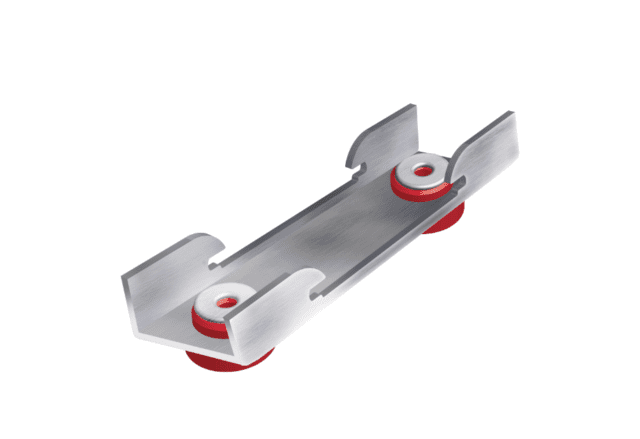
Why use the AcoustiClip system to soundproof your walls
We use the AcoustiClip system in all our best soundproofing kits, including soundproofing systems for ceilings. A majority of soundproofing products add mass or improve the sound absorption capabilities of an area, but for the best soundproofing, you need isolation or decoupling and that’s where the AcoustiClip comes in.
Soundproof walls without compromising space
Most customers want to soundproof a room without losing living space, and the most economical way to do this is by applying soundproofing directly to the wall. But how do you apply the sound insulation to the wall and create the separation? That’s the easy part: you use the AcoustiClip sound isolation clip.
Apply the clips directly onto solid party walls or stud frames as part of your acoustic wall system. Once the AcoustiClip is applied to the wall, it absorbs vibration sounds due to the dual rubber fixing points and stops it from transferring through the wall.
Use the AcoustiClip to build an acoustic wall
The AcoustiClip is suitable for use on all walls. Once the Acoustichannel, a metal furring channel, has been clipped in place, you can build your acoustic wall. Combine acoustic insulation slabs and soundproof panels to form a soundproof wall that effectively blocks all types of noise through your walls.
Still looking for more solutions to soundproof your walls?
That’s no problem. We’ve got plenty more solutions to meet your requirements. Wall soundproofing can be tailored to your space, as no one solution will meet everybody’s needs. Noisestop offers a range of products that soundproof walls of all shapes and sizes. Whether you want to build your acoustic wall or apply one of our soundproofing panels to your existing wall, look at some of our best selling wall soundproofing materials.
Best products to soundproof walls
Create your wall soundproofing kit using the best sound insulation products.
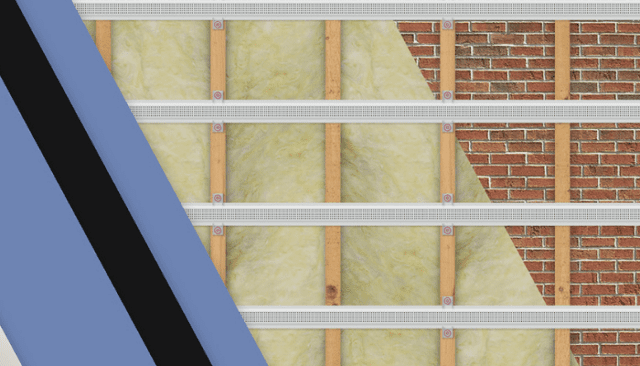

AcoustiClip | Sound Isolation Clip
£4.95 exc VAT.
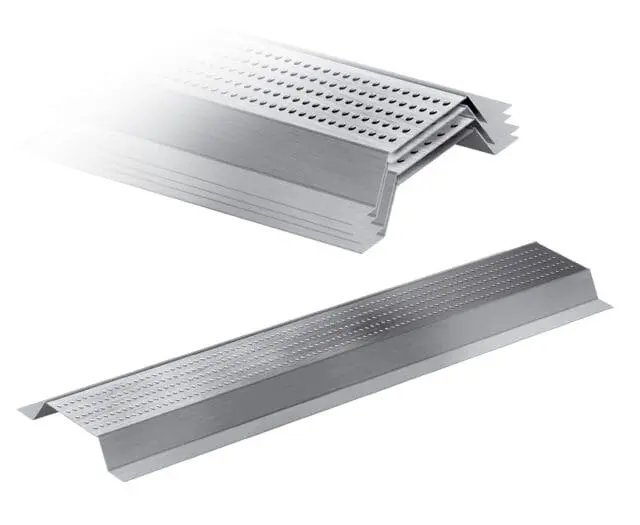
AcoustiChannel 1800mm Metal Furring Channel
£4.45 exc VAT.
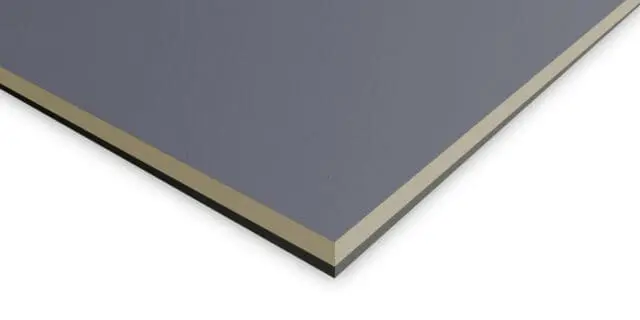
Noisestop 1 Plus Panel 18mm
£29.95 exc VAT.
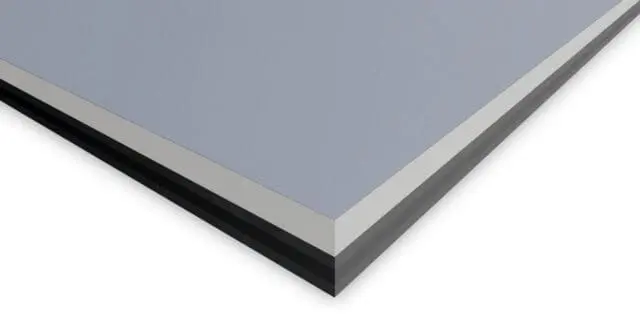
Sound Proof Silent Wall Panel 30mm
£59.95 exc VAT.
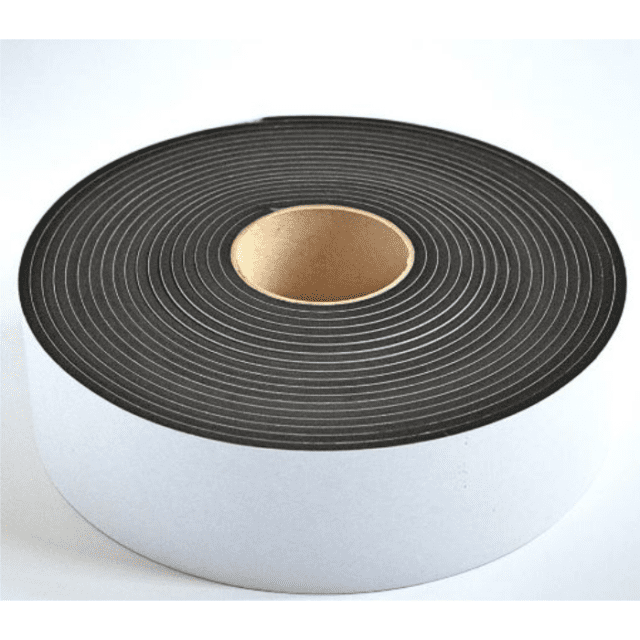
Noisestop Isolation Strips 10m - 50mm, 75mm & 100mm
£11.85 exc VAT.
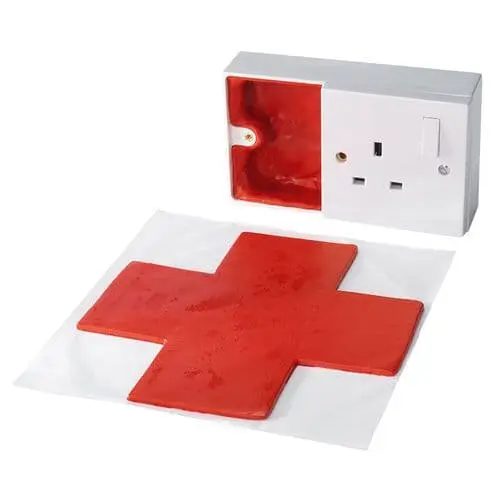
Acoustic Putty Pads Single & Double Sockets
£4.35 exc VAT.
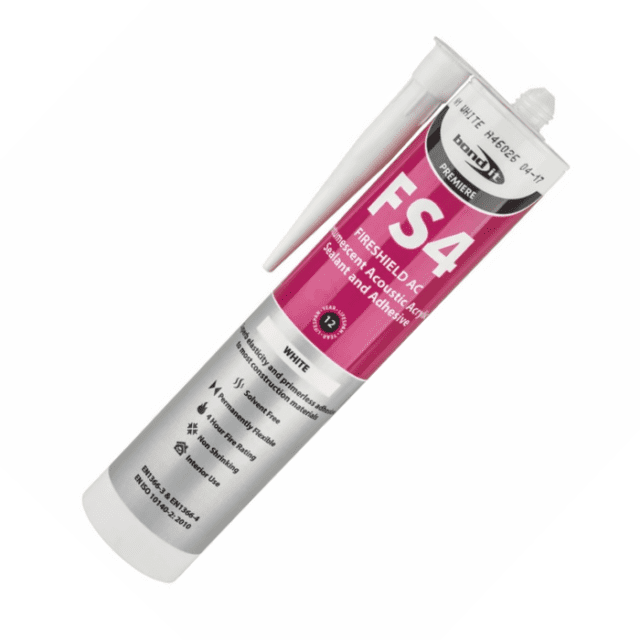
Acoustic Sealant 310ml & 900ml
£3.95 exc VAT.
Soundproofing walls FAQs
The best way to soundproof a wall is to block the sound transmission from one room to another. The most effective methods to soundproof walls are:
Add mass: increasing the density of the wall by adding mass. Use mass loaded vinyl, soundproof plasterboards and high density acoustic insulation to enhance the sound insulation.
Decoupling: By isolating the existing structure from the new wall, you will reduce the vibration sound that transmits through the wall. The AcoustiClip system is the best method of decoupling walls and ceilings.
Sound absorption: The wall’s ability to absorb sound waves is crucial in noise reduction. Product combinations work best for overall sound absorption or sound dampening. Acoustic insulation and soundproof membranes will dampen and absorb sound waves as they come into contact with them.
All our solutions are designed to incorporate as many of these as possible.
The best way to soundproof party walls and internal stud walls is to use a soundproof system that combines materials to offer the highest level of noise reduction.
We recommend the AcosutClip System to soundproof any wall. The systems incorporate all the soundproofing products to ensure exceptional noise reduction against airborne and vibration noise. Provided with the systems are the AcoustiClip, AcoustiChannel, acoustic insulation, Noisestop 1+ Panels, acoustic plasterboard 15mm and acoustic sealants.
The AcoustiClip Direct System is our most popular solution for party walls. If you require soundproofing for excessively noisy neighbours or studios, we have the AcoustiClip Solid Wall System. The AcoustiClip Stud Wall System will restore privacy within your home for internal stud partitions.
Our slimmest wall soundproofing solutions are the Noisestop Sielnt Panel or Wall System 2.
Silent Panel 30mm: The Noisestop Silent offers the best acoustic performance of wall soundproofing panels. At only 30mm thick, it can be used to soundproof walls in the tightest of spaces.
Wall System 2: Our thinnest solution combining soundproofing materials is Wall System 2. If you have limited space and require maximum sound insulation this is our recommended solution.
All our products and systems for walls and ceilings are supplied with acoustic plasterboard as the final finish. This type of plasterboard can be finished in the same way as standard plasterboards.
The acoustic plasterboards have a tapered edge which allows for taping and jointing if you want to avoid having them plastered.
Yes, you can reinstate electrical outlets into any of our soundproofing solutions.
We can provide acoustic putty pads for the electrical back boxes for single and double sockets.
You can use your wall as any other wall when attaching lightweight items.
For heavier objects like wall-mounted TVs, you must secure them to the structural wall behind the soundproofing. Direct sound transmission through these fixings would typically be minimised due to the mass and absorption of the soundproof panels.

